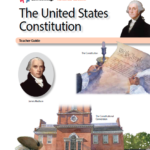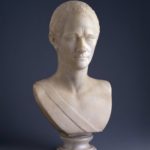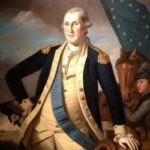By examining records of the Constitutional Convention, such as James Madison’s extensive notes, students witness the unfolding drama of the Constitutional Convention and the contributions of those who have come to be known as the Founding Fathers: Madison, Benjamin Franklin, George Washington, and others who played major roles in founding a new nation. In this lesson, students will learn how the Founding Fathers debated, and then resolved, their differences as they drafted the U.S. Constitution.
Presidency on Trial: Assessing the Limits of Presidential Power
As they framed the Constitution, many of the Founding Fathers were wary of a powerful chief executive who might overshadow the legislative branch. By constructing the separation of powers within the federal government with a system of checks and balances, the Framers sought to limit the power of the president. Students will investigate not only the formal checks as laid out in the Constitution, but also explore the informal checks on presidential power that have emerged in the modern era. Free registration required to access lesson plan.
‘Let Me Believe’
The thoughts of the Founding Fathers never sounded so good in this rap “Let Me Believe” about our freedoms in the First Amendment. Three rappers who went on to win Constituting America’s Best Song in its We the Future contest provide a unique way to explain our freedoms. You have a video that is a teaching tool you have been seeking to help students understand the First Amendment.
The Constitutional Convention: Four Founding Fathers You May Never Have Met

Introduce your students to four key, but relatively unknown, contributors to the U.S. Constitution — Oliver Ellsworth, Alexander Hamilton, William Paterson, and Edmund Randolph. Learn through their words and the words of others how the Founding Fathers created “a model of cooperative statesmanship and the art of compromise.”
Getting to Know the Founding Fathers
Learn more about the signers of the Constitution with these Founding Fathers biographies.
The Founders’ Library: Thinking as a Founding Father
Students will examine the ideas that the Founding Fathers brought to the Constitutional Convention of 1787, and use them to analyze the Constitution and Bill of Rights.
Amendment Worth A Thousand Words
With many pictures posted all over every social media platform, the #amendmentworthathousandwords’ overall mission will be to enlighten many of the rights promised to people by the Constitution. Through this challenge, many will become aware of their rights and what the Constitution does not only for them, but for all Americans as well! Lesson plan by Eboni Jenerette
The United States Constitution (CKHG Unit)

This unit explores the creation and central ideas of the United States Constitution. Across 18 lessons, students learn how, after the Revolution, the Founding Fathers worked to confront the shortcomings of the Articles of Confederation. They learn why the Bill of Rights was added to the Constitution, and explore reasons why the Constitution has survived as the guiding document of government in the United States.
Hamilton: An American Musical Resources

Alexander Hamilton, Founding Father and Broadway star, clashed with Thomas Jefferson politically and morally. But both figures were essential to the founding of the United States of America. Check out this page for resources on Jefferson, Hamilton, and other main players from the Broadway musical “Hamilton: An American Musical.”
Celebrating the Founders

This short video explores why Americans celebrate the Founding generation. Americans point to a “founding moment” and, from the country’s earliest days, celebrated this “moment” on July 4. The first individuals to be honored were military leaders like George Washington; later, individuals who created the nation’s government were celebrated. Professor Daniel Dreisbach draws parallels between the commemoration of Washington as “Father” of the country and Moses as “Father” of the Hebrew nation.
